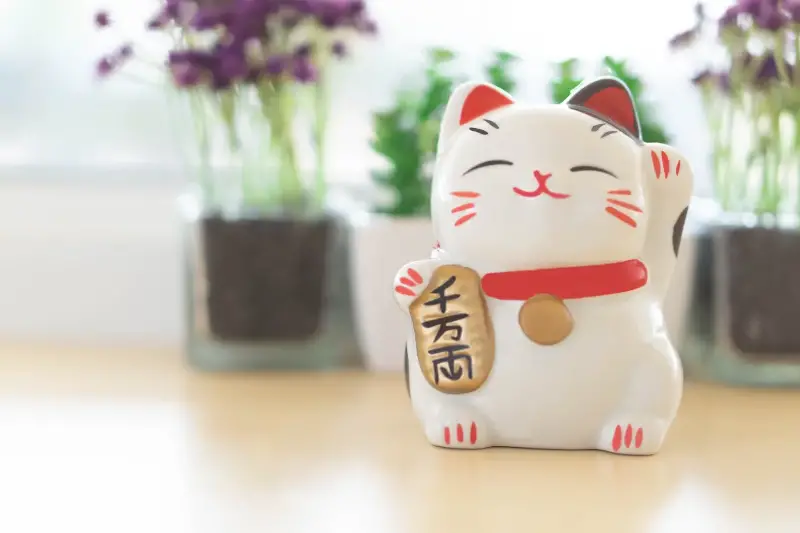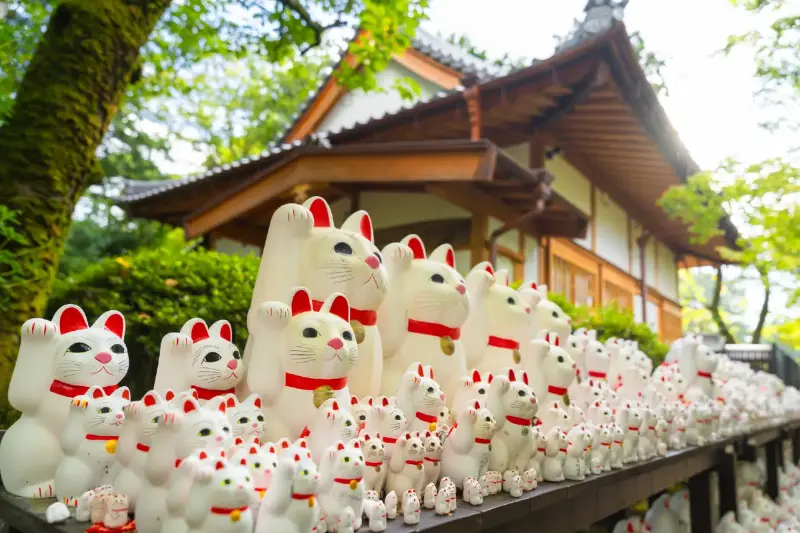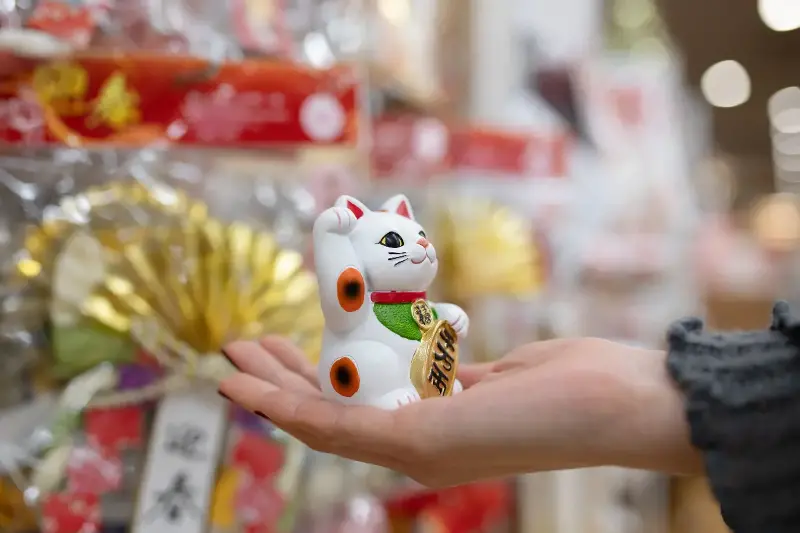There’s a good chance you’ve spotted a small, wide-eyed cat figurine in the window of a Japanese restaurant, convenience store, or even your favourite Asian corner shop. With one paw poised mid-wave, the Maneki Neko—or “Beckoning Cat”—is one of Japan’s most beloved cultural icons. But why do so many Japanese businesses display this curious cat, and what makes its presence such a symbol of fortune, tradition, and hope? Let’s explore the captivating story of the Maneki Neko and what it represents for shop owners and everyday people.

The Origins of Maneki Neko: Fact, Folklore, and Fortune
The true history of the Maneki Neko meanders between legend and reality, adding to its rich allure. One story traces the figurine’s roots back to 17th-century Tokyo, where a humble temple cat supposedly beckoned a passing samurai during a storm. As the warrior approached, lightning struck the spot he’d just vacated, and in gratitude, he donated money to preserve the temple, launching the lucky cat’s association with safety and prosperity.
Another tale suggests the lucky charm began when a poor shopkeeper took in a starving stray cat. In return, the feline sat outside the door, raising its paw to bring in curious customers—turning the business’s fortunes around. Whichever story you prefer, the Maneki Neko has always embodied the idea that a welcoming cat can turn bad luck into good.
Symbolism and Styles: What Does the Cat Mean?
Far from being just a cute mascot, the Maneki Neko brims with hearty symbolism. The raised paw, for example, is thought to “beckon” luck towards the owner. In Japanese, the gesture for beckoning is palm down, which can look to outsiders like a wave, but for locals it’s an invitation. A raised left paw is said to attract customers, making it particularly popular in shops and restaurants, while a right paw is believed to attract money and good luck, explaining its presence near cash registers and business entrances.
The colour of the Maneki Neko also matters. The traditional tri-colour cat (white, black, and orange) is considered the luckiest, imitating the rare Japanese Bobtail breed. All-white cats stand for purity, black wards off evil spirits, gold brings wealth, and even pink or red Maneki Nekos have emerged more recently to offer luck in love and relationships.
The object the cat holds in its paw often carries further significance—be it a koban gold coin for financial fortune, a fish for abundance, or a tiny mallet for unending wealth. Each detail is carefully considered to maximise the blessing the figurine can bestow.

Cultural Impact: Not Just a Shopkeeper’s Superstition
The lucky cat’s fame isn’t confined to marketplace superstition. Over time, Maneki Neko has crossed over from business decor to become a national symbol and a global pop culture star. Every 29th September, Tokyo’s Gotokuji Temple, thought by many to be the birthplace of the lucky cat legend, welcomes crowds for “Maneki Neko Day”. Here, thousands of cat figurines line the temple, offered as thanks for answered prayers or wishes for even more luck.
Maneki Neko has also found its way into manga, anime, and even high-fashion accessories, bridging generations with its wide grin and friendly paw. In many Japanese homes, students might keep a small Maneki Neko on their desk, hoping for academic luck, while families gift them to newlyweds for prosperity in their new lives together. The figure has become a cross-generational talisman, offering comfort, joy, and a sense of security in both personal and business domains.
Modern Adaptation: Maneki Neko Around the World
Today, the Maneki Neko has proven itself as a truly international icon, embraced by shopkeepers and cat lovers far beyond Asia. Its presence in shops, restaurants, and offices from Bangkok to Barcelona symbolises adaptability—and the universal appeal of a little bit of luck. Solar-powered, battery-operated, and even digital versions of the paw-waving cat keep popping up, bringing tradition into the 21st century.
In Japan, the belief in omamori (protective charms) remains strong, and the Maneki Neko’s enduring popularity speaks volumes about the collective desire for positivity, hope, and fortune—values that transcend language and geography. Whether you see it as a lucky mascot, a whimsical decorative piece, or a conversation starter, the Beckoning Cat continues to win hearts wherever it perches.

Much more than a kitschy collectible, the Maneki Neko offers insight into Japan’s enduring belief in the power of good luck and the deep-seated human desire to attract prosperity and opportunity. So, the next time you’re tempted to adopt a beckoning cat for your own space, remember: you’re not just buying a figurine—you’re inviting a centuries-old tradition of hope and happiness into your life.
